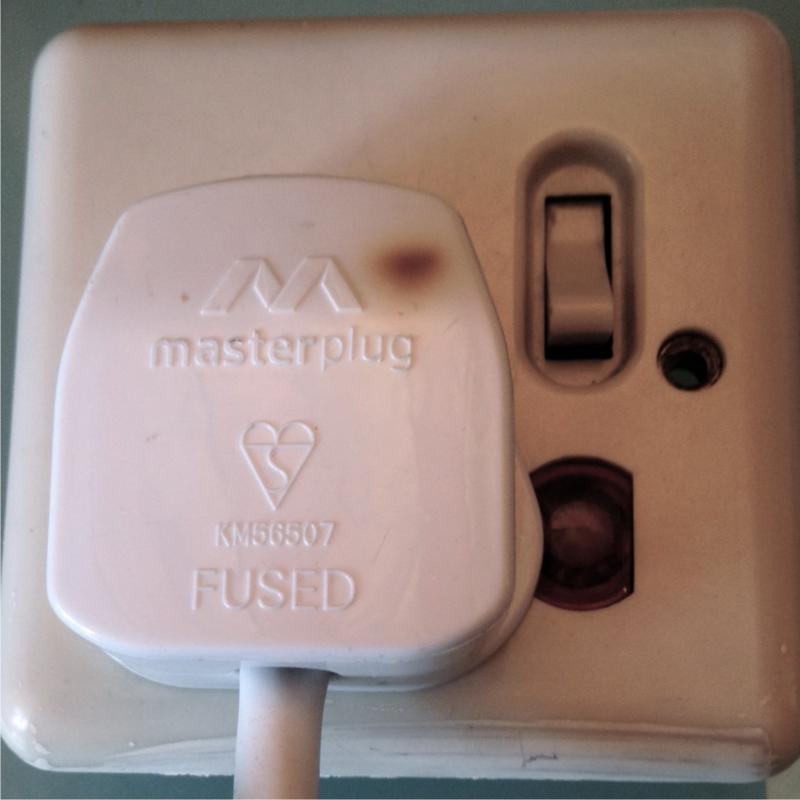Hi folks, first time poster here!
In February my wife and I will move into my grandmother's old house. It's a lovely, big old house from 1952, with thick walls (this is relevant).
Mum remembers the house being rewired in the mid to late 90s, but there are not (and never have been) enough power sockets! (Except in the kitchen which was totally re-done around 2007).
For example - in the hall downstairs there is but 1 single surface mounted socket. We'll need at least 4 sockets in the hall to power a lamp, cordless phone and broadband router, with 1 spare.
In the room we'll use as our living room, there are two double sockets, we may need one more set of two.
Now, as regards the single surface mounted socket in the hall, I know enough about electrics to upgrade this to a double surface mounted socket myself. However, if we wanted to fit extra sockets, either in the hall or elsewhere in the house, I believe this would be a fairly big job! I don't have the confidence or expertise to do it all myself (and in any case, what there's Part P to think about - which I assume applies here in Northern Ireland) so I don't really want to risk it - heard too many horror stories of fires or electrocutions, both of which scare me!
Ok, so, my plan in the rooms where I don't have enough sockets would be (at least until we get an electrician to come in and do it all) as follows:
I plan to upgrade the single surface mounted socket in the hall.
I plan, in any of the rooms where I need extra sockets, to buy a switched, RCD protected multi way trailing socket, and run the cable around the wall, then once it is in the position I want I'll use cable clips to tack it to the wall.
I'm aware of the dangers of overloading aforementioned multi way adaptors, which is why I will only have low powered devices plugged in (the most powerful device plugged in is likely to be a vacuum cleaner, but this will not be used constantly, or with other devices running at the same time).
So big question is, would it be safe to use one of these multiway adaptors, and would it be ok to tack the wire to the wall? I know you can't daisychain them, but is it ok to plug two into a double socket if necessary (unlikely that it will be).
Thanks for your help!
In February my wife and I will move into my grandmother's old house. It's a lovely, big old house from 1952, with thick walls (this is relevant).
Mum remembers the house being rewired in the mid to late 90s, but there are not (and never have been) enough power sockets! (Except in the kitchen which was totally re-done around 2007).
For example - in the hall downstairs there is but 1 single surface mounted socket. We'll need at least 4 sockets in the hall to power a lamp, cordless phone and broadband router, with 1 spare.
In the room we'll use as our living room, there are two double sockets, we may need one more set of two.
Now, as regards the single surface mounted socket in the hall, I know enough about electrics to upgrade this to a double surface mounted socket myself. However, if we wanted to fit extra sockets, either in the hall or elsewhere in the house, I believe this would be a fairly big job! I don't have the confidence or expertise to do it all myself (and in any case, what there's Part P to think about - which I assume applies here in Northern Ireland) so I don't really want to risk it - heard too many horror stories of fires or electrocutions, both of which scare me!
Ok, so, my plan in the rooms where I don't have enough sockets would be (at least until we get an electrician to come in and do it all) as follows:
I plan to upgrade the single surface mounted socket in the hall.
I plan, in any of the rooms where I need extra sockets, to buy a switched, RCD protected multi way trailing socket, and run the cable around the wall, then once it is in the position I want I'll use cable clips to tack it to the wall.
I'm aware of the dangers of overloading aforementioned multi way adaptors, which is why I will only have low powered devices plugged in (the most powerful device plugged in is likely to be a vacuum cleaner, but this will not be used constantly, or with other devices running at the same time).
So big question is, would it be safe to use one of these multiway adaptors, and would it be ok to tack the wire to the wall? I know you can't daisychain them, but is it ok to plug two into a double socket if necessary (unlikely that it will be).
Thanks for your help!




